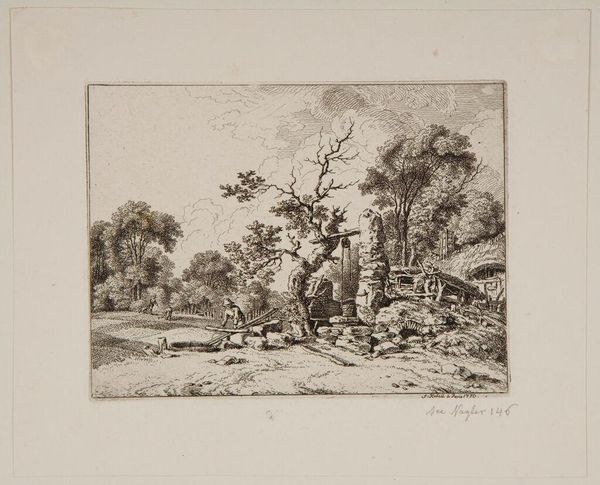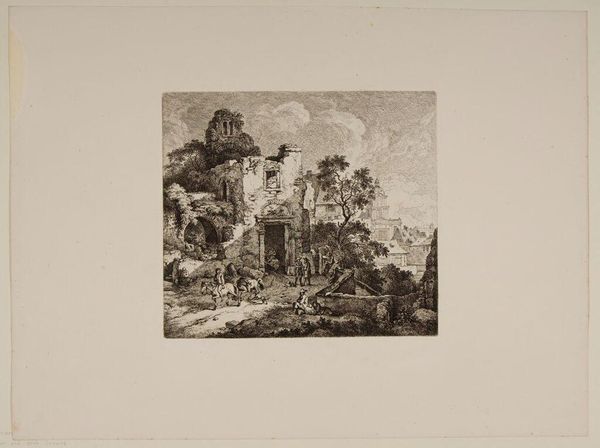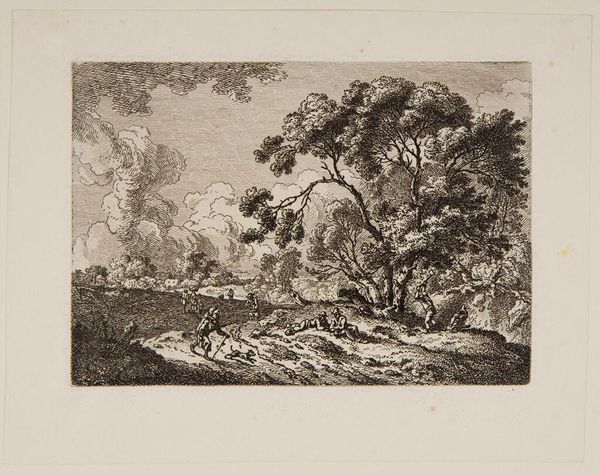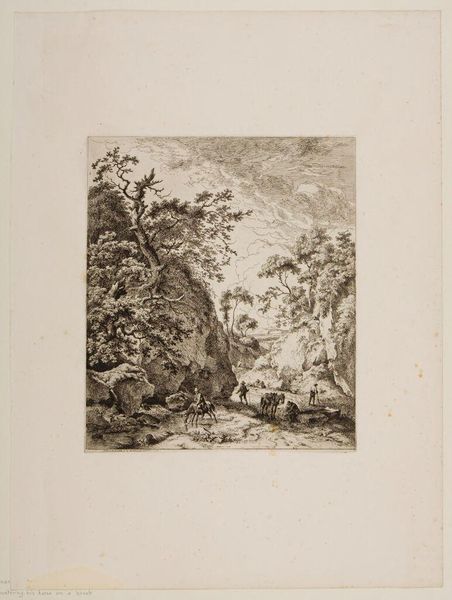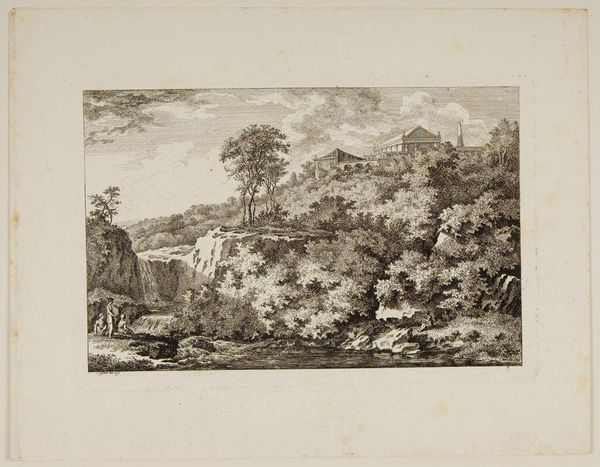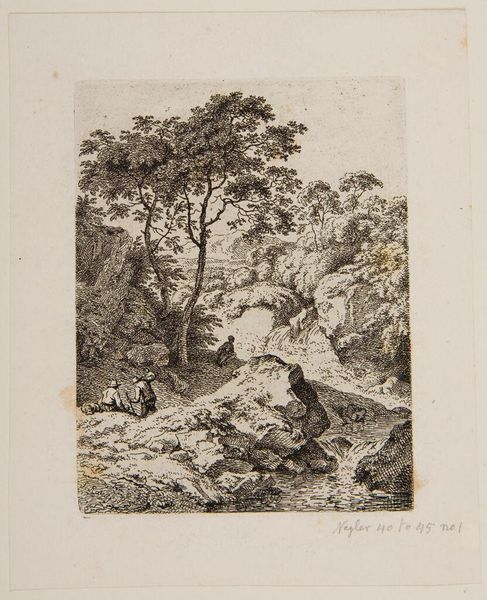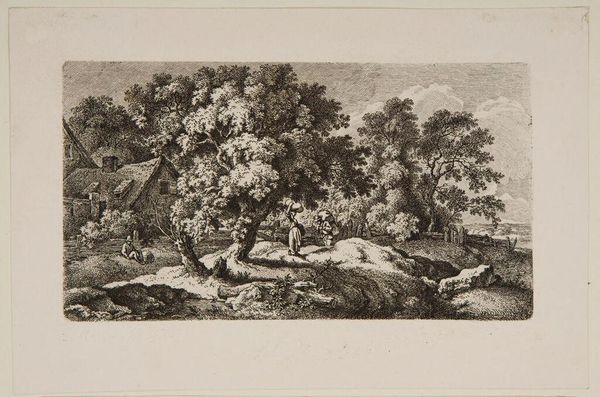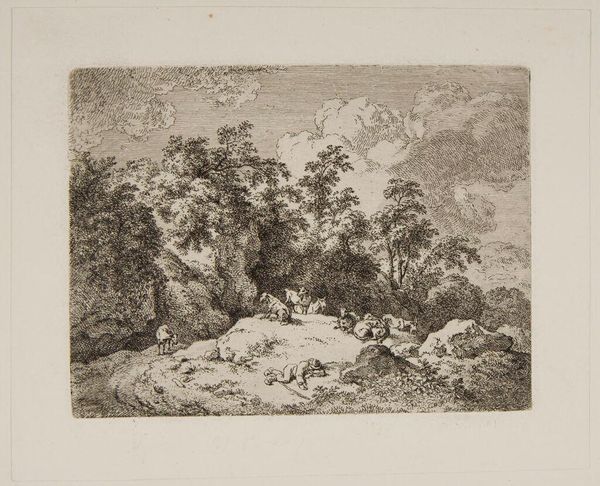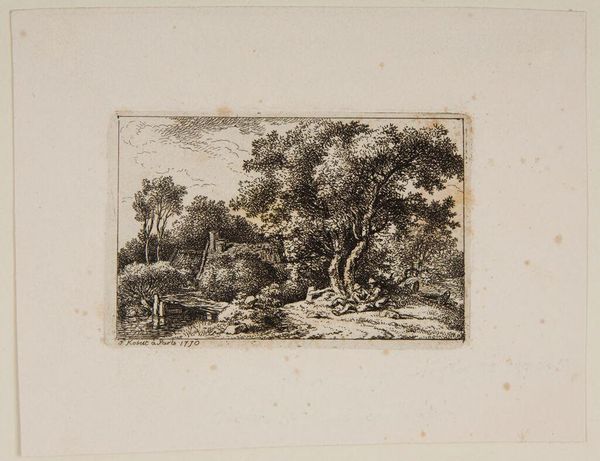
Copyright: CC0 1.0
Curator: This is "Wells (2)," an etching by Ferdinand Kobell, dating from the late 18th century and held in the Harvard Art Museums. Editor: It's a stark composition. The well, with its skeletal tree, gives off a feeling of abandonment. Is it just me? Curator: Wells, especially in pre-industrial societies, often symbolize life and community. The state of disrepair might reflect societal changes occurring at that time. Editor: I'm drawn to the etching technique itself. Notice the cross-hatching? It's a relatively accessible printmaking method, capable of mass production, but here it evokes a deep sense of place and the texture of the materials. Curator: Absolutely. Water, of course, is a powerful symbol. The well, as a locus of access, can represent sustenance, purification, even spiritual cleansing. Editor: Looking at it this way makes me think of the labor involved in building and maintaining the well. Curator: A good reminder to appreciate these objects as both practical resources and symbolic carriers of meaning. Editor: Exactly. The image, though simple, is dense with the realities of daily life.
Comments
No comments
Be the first to comment and join the conversation on the ultimate creative platform.
